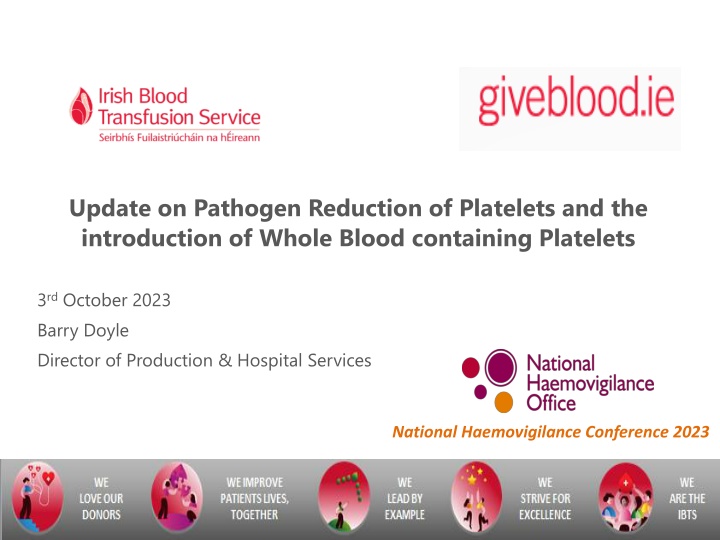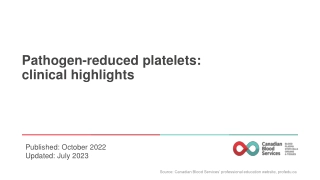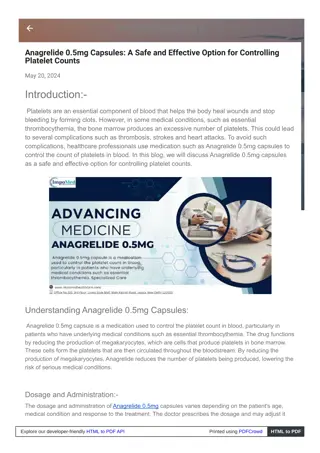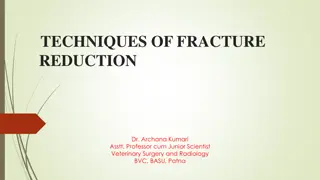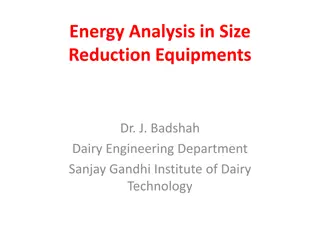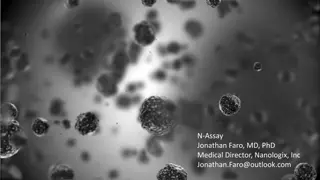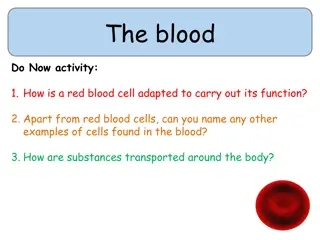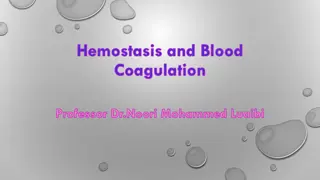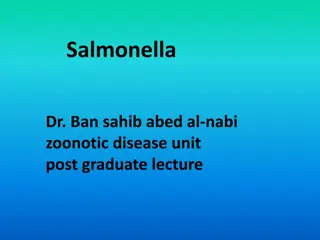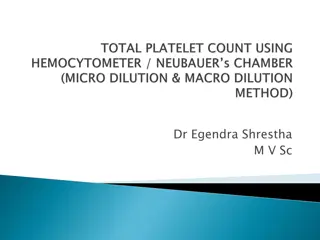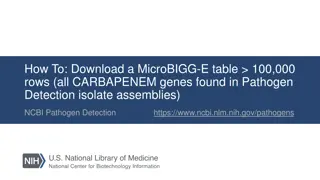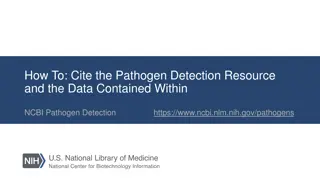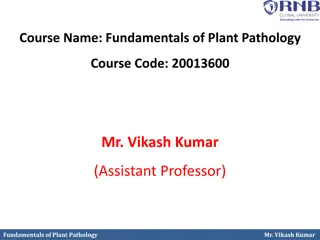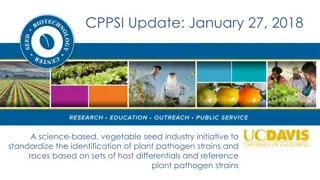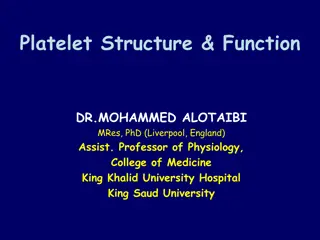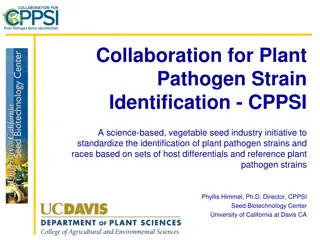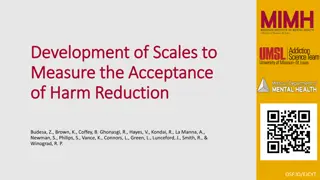Update on Pathogen Reduction of Platelets at National Haemovigilance Conference 2023
This update covers the latest developments in pathogen reduction of platelets, including the introduction of whole blood containing platelets. Key strategic initiatives focus on assessing post-collection blood product manipulation processes and developing new products to meet healthcare needs. The advancement in platelet production includes the Cerus INTERCEPT Blood System, aimed at reducing the risk of transfusion-associated transmission of viruses, bacteria, and parasites. Validation processes and platelet quality assessments are also highlighted.
Download Presentation

Please find below an Image/Link to download the presentation.
The content on the website is provided AS IS for your information and personal use only. It may not be sold, licensed, or shared on other websites without obtaining consent from the author.If you encounter any issues during the download, it is possible that the publisher has removed the file from their server.
You are allowed to download the files provided on this website for personal or commercial use, subject to the condition that they are used lawfully. All files are the property of their respective owners.
The content on the website is provided AS IS for your information and personal use only. It may not be sold, licensed, or shared on other websites without obtaining consent from the author.
E N D
Presentation Transcript
Update on Pathogen Reduction of Platelets and the introduction of Whole Blood containing Platelets 3rd October 2023 Barry Doyle Director of Production & Hospital Services National Haemovigilance Conference 2023
Conflict of Interest Disclosure I have no conflicts of interest to declare.
Blood Components Plasma Platelets Red cells Irish Annual Blood Requirement 130,000 whole blood donations - 26,000 platelets - 17,000 plasmas
Key Strategic Initiatives Assessment of pathogen reduction of platelets a post collection blood product manipulation process Develop new products and services designed to meet emerging healthcare needs
Platelet Production Developments Pathogen Reduction of Platelets - Cerus INTERCEPT Blood System The INTERCEPT system is used to inactivate bacteria, viruses, parasites, and leucocytes. This process is intended to reduce the risk of transfusion-associated transmission of viruses, bacteria, and parasites, and may also reduce the risk of adverse effects due to donor leucocytes.
Pathogen Reduction of Platelets INTERCEPT Kit Final product Pathogen Reduced platelets Addition of psoralen (Amotosalen) CAD Compound Adsorption Device Removes remaining unbound Amotosalen Illumination Bag UV exposure
IBTS Pathogen Reduction Validation Product Quality Pathogen Reduction of Pools 7 Buffy Coat Pool Optimisation Platelet Pools Buffy Coat Optimisation Apheresis in Additive Solution Pathogen Reduction of Apheresis Platelet Apheresis Equipment Upgrade System Effectiveness Platelet Pools Bacterial Spiking IBTS Pathogen Reduced Pool
Platelet Quality Assessment Next version of EDQM Glucose measured at the end of the recommended shelf-life Above Limit of Quantification
Platelet - Storage Study Quality Parameters Volume Platelet Content / Concentration Leucocyte Content Swirling Aggregation MPV Comparison Study Baseline testing then on day 2, 6 and 8 Metabolic Glucose concentration Biochemical pH levels PO2/PCO2 Partial Pressure Platelet Activation CD62P expression Annexin V binding (%)
Feasibility Assessment Process - Validation Project Management Validation Project Team Change Management Project Steering Committee Quality Documentation Programme Board
Validation Product quality System Effectiveness National Consultant Group Protection against pathogens Bacteria Viruses Emerging pathogens Medical & Scientific Advisory Committee Review Product efficacy literature review Stakeholder Engagement Operational Impact Benefits to supply chain Economic Considerations
Medical & Scientific Advisory Committee Review Due to the very good validation data from the IBTS, a national clinical study could be considered, however, it became evident that a clinical study would not be feasible. Based on the discussion and analysis of available information, the final recommendation from M&SAC on the 16th May 2023 was that : 1. Pathogen reduction of platelet concentrates are not implemented now. 2. The decision should be revisited after three years unless new situations require urgent action or 3. If further clinical evaluation /trials show superiority / non inferiority of PR of Platelets
Donors Apheresis Clinic QA Dept. Production Dept. Validation Dept. Component Scientists QC Lab
Separation of Whole Blood Maximise use of donated blood Clinical need and avoidance of unnecessary exposure Red cell Buffy coat (platelets) Plasma Optimise storage and shelf life Need for plasma for fractionation
What type of whole blood? IBTS/PMF/SPEC/0203[4] Whole blood suitable for neonatal use Not This! Whole blood for trauma Cold stored (4 C) Low titre anti-A/B CPD storage time controlled by QC Group O (RhD+/RhD-) Leucocyte filtered with platelet sparing filter
Why is Whole Blood Needed Again? EBA Working Group New Products and Innovation Major Haemorrhage Survey 15/26 EBA member states responded
Usage of Whole Blood In the EBA survey 5 countries currently use whole blood to treat major haemorrhage in some form Country Whole Blood Shelf Life A 21 days B 14 days C 7 days pre-hospital, then up to 21 days in hospital in trauma fridge D 21 days E 21 days IBTS will establish usable shelf-life during validation
Study will look at whether giving whole blood instead of red blood cells and plasma pre-hospital will: Reduce the number of deaths 24 hours after injury Reduce the need for further large blood transfusions when patients get to hospital
Next Steps Step 1 Product validation Aim to complete validation this year in MRTC Step 2 Subject to successful validation & approval Pilot Study Step 3 - Subject to approval - Plan to make available Supply logistics and management of wastage Clinical Use Pre-hospital ? In-hospital ? Potential impact on current major haemorrhage protocols Aine Fitzpatrick Chief Medical Scientist Components and Hospital Services MRTC Mark Lambert National QC Manager
Thank You Connect with Us LINKED IN INSTAGRAM TWITTER Irish Blood Transfusion Service @Giveblood.ie @Giveblood_ie
